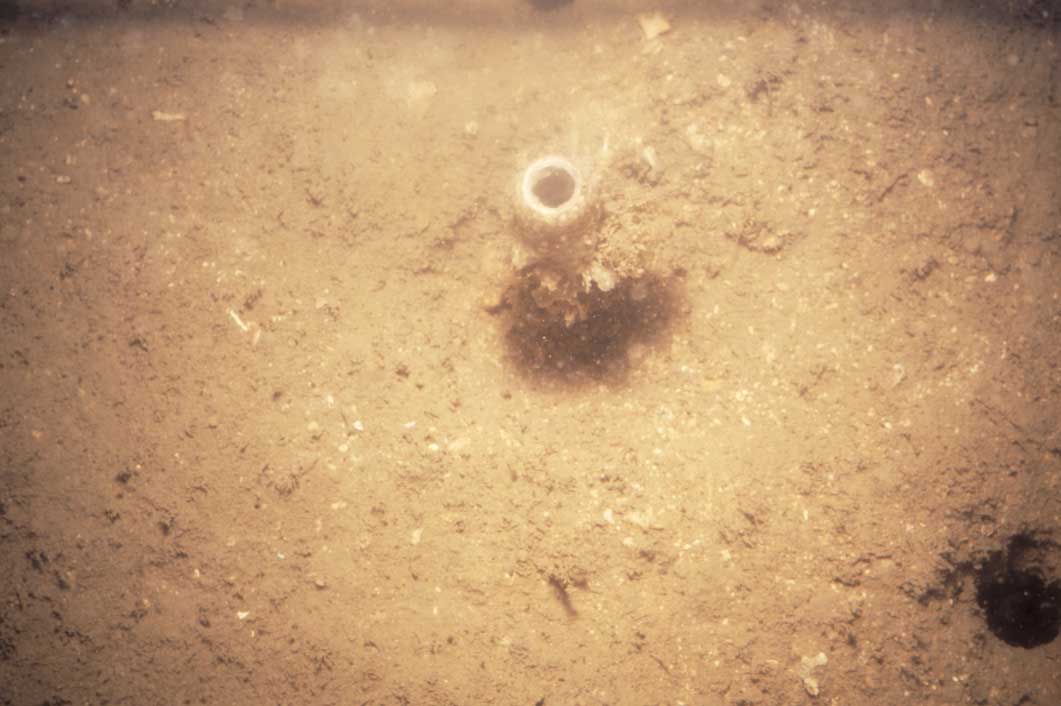Morphological description (show/hide)
| Colour. Yellow-beige on deck (Munsell 7.5YR 8/2), white in ethanol. | | Description. Enlarged base burrowing into sub | | Soft, compressible and easily torn. | | Transparent, membranous, irregular, wrinkled and hispid. | | Choanosomal skeleton. Architecture cavernous, reticulate, with distinct axial and extra-axial regions. Axial skeleton consists of large multispicular tracts composed of larger choanosomal styles, 20-50 spicules in width, mainly confined to central region of sponge (particularly in fistules). Extra-axial skeleton consists of widely spaced multispicular radial tracts of styles arising perpendicular to axis, becoming plumose in the peripheral skeleton, supporting the tangential ectosomal skeleton, spicule tracts forming a wide-meshed reticulate skeleton with very large cavernous meshes up to 2mm diameter, particularly in the region of fistules, Some collagenous material is associated with spicule tracts but true fibres are absent. | | Dense layer of larger choanosomal styles lying tangential to the surface, mostly in irregular multispicular bundles of 2-10 spicules, with smaller ectosomal styles producing tufts (echinating) around spicule bundles. Spicule bundles bound together with small amounts of collagen. | | Spicules. Choanosomal styles are long, slender, straight or slightly curved at centre, nearly hastate (abruptly pointed), occasionally slightly stepped points, with evenly rounded bases (length 448-(609.8)-794um, width 8-(16.4)-23um). Smaller ectosomal styles slender, straight, fusiform, with sharp points and evenly rounded bases (length 67-(106.8)-252um, width 3-(5.4)-8um). | | nil. |
|
Reference (show/hide)
| Erpenbeck D, Hall K, Alvarez B, Büttner G, Sacher K, Schätzle S, Schuster A, Vargas S, Hooper JNA, Wörheide G (in press) The phylogeny of halichondrid demosponges: past and present re-visited with DNA-barcoding data. The phylogeny of halichondrid demosponges: past and present re-visited with DNA-barcoding data. Organisms Diversity & Evolution. |
|

